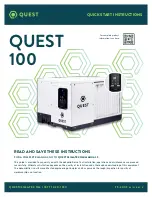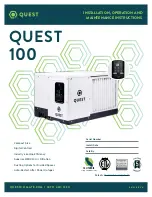
6.
PRINCIPLES OF OPERATION
6.1 INTRODUCTION
ZEKS’ HeatSink™ dryers remove moisture from compressed air by cooling the air
temperature to between 34°F and 38°F (1°C - 3°C). This causes vapors to condense
into liquid droplets which can then be easily removed from the air. The major systems
of the dryer which contribute to its operation are the Air System, the Moisture Removal
System, the Refrigeration System, the Thermal Mass Circulating System and the
Controls. The following paragraphs describe each of the systems in greater detail.
6.2 AIR SYSTEM
The air system consists of the dryer components which are in contact with the
compressed air. Referring to Figure 1 and following the bold “
AIR FLOW
,” hot saturated
air from the compressor enters the precooler/reheater where the air temperature is
reduced prior to entering the chiller by the cool air exiting the air/moisture separator.
This precooling allows for the use of a smaller refrigeration system. The air then goes
into the chiller section where it is further cooled to the desired dew point by a thermal
mass fluid. The temperature of the thermal mass fluid is maintained by the refrigera-
tion circuit and controls. The air continues to the separator where moisture is
removed, thereby, allowing the cool, dry air to return back to the precooler/reheater to
be heated by the incoming moist hot air. The air exiting the “reheater” portion of the
dryer should be approximately 15°F - 20°F lower than the inlet air temperature based
on standard conditions at full rated flow. ZEKS offers a Cold Mist Eliminator option
on all 200-400 G-Series dryers. This filter, located after the dryer’s separator,
coalesces moisture at the coldest point in the system for maximum efficiency. A
pressure differential gauge, visible from the side of the dryer, indicates the pressure
drop through the element.
8
FLOW DIAGRAM
FIGURE 1










































